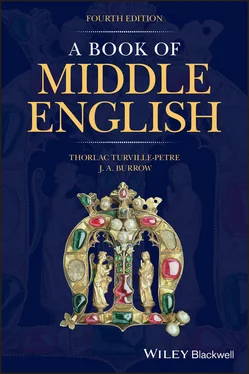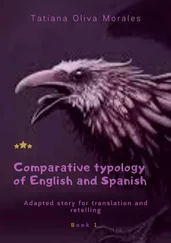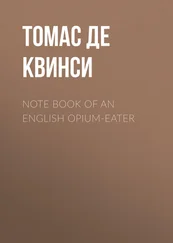We have already seen how, in the post‐medieval period, the spelling of vowels failed to keep pace with changes in the sounds themselves (2.2.1 above). The spoken language went on changing, but the written or printed language assumed a standardized, and therefore largely unchanging, set of forms. The result, so far as consonants are concerned, is that modern spelling persists in recording sounds which have long since ceased to be pronounced at all. Examples are the initial letters in modern ‘gnaw’, ‘knot’ and ‘wring’; the final letters in ‘damn’ and ‘comb’; and the medial letters of ‘would’ and (in most pronunciations) ‘night’. It can safely be assumed that letters such as these are to be pronounced whenever they occur in medieval spellings. Thus, Middle English gnawen begins with /g/ – as one might, after all, expect.
Middle English scribes, as represented in this book, employed three consonant symbols unfamiliar to the modern reader. These are: ð (known as ‘eth’), þ (‘thorn’), and ʒ (‘yogh’). Of these, the first two both represent what would now be called ‘ th sounds’, without distinguishing in either case between the initial sounds of ‘thin’ and ‘this’. ‘Eth’ is the Latin d with a cross‐stroke, hence Ð in its capital form. This went out of fashion earlier than ‘thorn’, a letter borrowed by Anglo‐Saxon scribes from the runic alphabet. In some areas the letter þ became indistinguishable from y : hence the use of y for th in ‘Ye Olde Teashoppe’. This confusion no doubt contributed to the general adoption of the two‐letter spelling th after 1400. ‘Yogh’ ( ʒ ) is simply the descendant of the Anglo‐Saxon letter‐form for g , which Middle English scribes retained alongside the ancestor of the modern form of g . They tended to use modern g for the stop consonant as in ‘good’, reserving ʒ for other purposes. It corresponds to modern consonantal y in words such as ʒong , ‘young’, and to modern gh in words such as riʒt , ‘right’. In the latter case, ʒ represents sounds heard in Scots ‘licht’ and ‘loch’.
The adoption of th for þ and of gh for ʒ in later Middle English contributed to the establishment of a set of modern two‐letter spellings for single consonant sounds, where h is regularly the second, differentiating letter. Thus: ch , gh , sh , th . This pattern not being yet established in Middle English, ‘child’ may be spelt cild , ‘shall’ may be schal .
The main rule governing word‐stress in Middle English is to place the primary stress on a word’s first syllable unless that syllable is an unstressable prefix. Thus: wíldernes , kíngdom ; but uncoúþ , bihýnden . Since this is also modern English practice, the reader will encounter no difficulty with most words.
Stressing on the first syllable was a general rule in Germanic languages, which therefore governed Scandinavian borrowings in Middle English as well as native words. The rule in medieval French, however, was almost the exact opposite: to stress a word on the heavy syllable closest to the end of the word (so not, for example, on an unstressable final /ǝ/). English has borrowed many words from French, and in most cases these now conform to the Germanic rule; but in Middle English such words commonly vary between French and native stressing – thus, natúre beside náture . Mossé, in his Handbook of Middle English , illustrates this with a line of Chaucer’s: ‘In dívers art and in divérse figures’.
Middle English words of two or more syllables have, more frequently than in Modern English, a secondary as well as a primary stress. Thus Gower can rhyme lye with avánterìe (13/39, 40) and springe with knówlechìnge (13/15, 16).
3 Vocabulary
3.1 Introduction
The vocabulary of Middle English is considerably more varied in its origins than that of Old English (see above, 1.1.1 (iii)). This variety has two main causes: the influence of Scandinavian languages, and the combined influences of Latin and its vernacular derivative, French. These influences operated in different ways. French or Latin words might be adopted or ‘borrowed’ wherever English people used those languages, which could be anywhere in the country; but Scandinavian loan‐words appeared at first only in those northern and eastern regions where Danish or Norwegian was spoken. Although many such borrowings from Scandinavia eventually came into general use, they had, to begin with, a distinctively regional distribution.
Scandinavian or ‘Viking’ raids on Anglo‐Saxon England led to settlements whose southern and western limit was defined roughly by a line drawn from London to Chester in a treaty of about 886. To the north and east of this line lay the Danelaw. Large parts of this area were settled by the immigrants, as is still shown by place‐names with Scandinavian elements such as ‘‐by’ and ‘‐thorpe’ (Grimsby in Lincolnshire, Milnthorpe in Cumbria). In these circumstances, Scandinavian words naturally found their way into the speech of the native English who came into contact with the settlers, and also into the speech of the settlers themselves as they came to abandon their own Danish or Norwegian and speak the language of their adopted country – a process evidently complete by the twelfth century.
Many such Scandinavian loan‐words have continued throughout their career in English to be regional or ‘dialect’ words. Thus the borrowing from Danish, kay meaning ‘left’ ( Sir Gawain , 9/422 here), survived as a Cheshire dialect word into modern times, but never achieved general currency. Chaucer attributes several such words to the two Northumbrian students in his Reeve’s Tale (text 18a here), as part of a humorous imitation of their Northern speech: e.g. lathe for ‘barn’ (Old Norse hlaða ). It should be remembered, however, that local users of such words, in Cheshire or Northumberland, would not have regarded them as ‘dialectal’, still less have used them with any special intention of local colour – in the absence, that is, of any recognized national standard vocabulary with which they might be contrasted.
But Scandinavian influence upon English vocabulary is by no means confined to areas of the Danelaw. By a process of secondary, internal borrowing, many loan‐words came to be used in other, and often in all, parts of the country. In this way such very common words as ‘die’, ‘knife’, ‘law’, ‘skin’ and ‘take’ early established themselves in the mainstream of English, and so formed part of the normal vocabulary of Southern writers such as Gower or Chaucer. This process of adoption continued throughout the Middle English period. Thus the word ‘ill’, from Old Norse illr , used in Sir Gawain (9/346), had not yet penetrated to London by 1400: Chaucer attributes it to his Northern students. The most remarkable case is that of the pronouns of the third person plural, modern ‘they, their, them’. It is rare for a language to borrow pronouns from another; but in the course of the Middle English period, these Scandinavian forms in ‘th‐’ gradually replaced native forms beginning with ‘h‐’ (Old English hie , hiera , him ). The first to be replaced were the nominative forms derived from Old English hie , which had become easily confused with the third person singular forms such as he or hi . By 1400, the Scandinavian ‘they’ had been adopted practically everywhere; but ‘their’ and ‘them’ are found only sporadically south of a line from the Wash to the Severn. Thus Chaucer and Gower have a mixed set: they , here , hem . (See map, p. 16.)
Читать дальше












